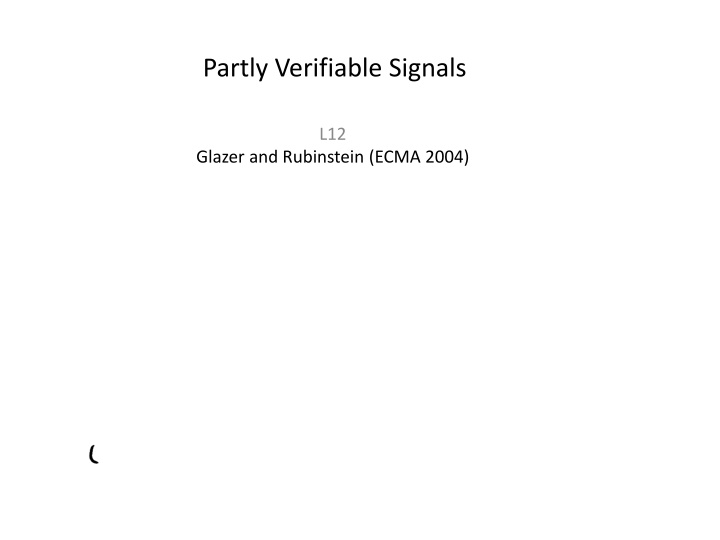
Optimal Information Verification in Market Dynamics
Explore the challenges and strategies involved in optimal verification of information in market dynamics, including uncertainty, party responsibility, verification efforts, and the impact of prior communication. Realistic settings and case examples shed light on balancing verification costs with effective decision-making.
Download Presentation

Please find below an Image/Link to download the presentation.
The content on the website is provided AS IS for your information and personal use only. It may not be sold, licensed, or shared on other websites without obtaining consent from the author. If you encounter any issues during the download, it is possible that the publisher has removed the file from their server.
You are allowed to download the files provided on this website for personal or commercial use, subject to the condition that they are used lawfully. All files are the property of their respective owners.
The content on the website is provided AS IS for your information and personal use only. It may not be sold, licensed, or shared on other websites without obtaining consent from the author.
E N D
Presentation Transcript
Partly Verifiable Signals L12 Glazer and Rubinstein (ECMA 2004)
Information Transmission in Markets S-R setting with type independent preferences of S Benchmarks: - Cheap Talk (only bubbling equilibrium) - Perfectly (costlessly) verifiable types (only fully revealing equilibrum) Realistic Settings: fact checking is costly and verification is partial Questions: - Uncertainty about verifiability - Which party should verify information? - Optimal verification effort? - Does prior communication improve verification process? - If yes, what is the optimal verification mechanism?
Partial verification State space where is an aspect and quality is Uncertainty about verification (Shin 2003) - Low types S strategically withhold negative information - Pooling at the bottom - Uncertainty mutes R s skepticism - result in asymmetric return dynamics Unaware buyers (Milgrom and Roberts 1986) - R unaware which characteristics are relevant - S announce high but irrelevant test scores - Test scores ignored by R - With heterogenous buyers competition among S better than regulation
Costly verification Costly verification by a sender (Jovanovic 1982) - Excessive testing and selective reporting (data mining) - Welfare loss (as in the signaling literature) Costly verification by a receiver (Townsend 1979) - Insurance against wealth shocks - S informs about the wealth shock - R can verify the claim at some cost - Optimal contract: no verification until default Today: capacity constraint (can verify only one aspect)
Motivating example A candidate with two characteristics (talent, loyalty) and an employer Decision: hire, not hire Candidate (sender, speaker) - strictly prefers action ``hire - can send a message regarding his characteristics Employer (receiver, listener) - wants to hire only if sum of characteristics above one - has capacity to verify only one characteristic Questions: 1. Can employer reduce probability of a mistake by talking to a candidate? 2. If yes, how should he verify information obtained in the conversation?
Glazer and Rubinstein persuasion game State space with aspect Action space Sender always prefers Acceptance and rejection region Verification mechanism
Preferences over Verification Mechanism Fix Let R preferences over verification mechanisms - Type one error Type two error - mechanism is R-optimal if it solves Remarks: - We search for the best verification mechanism for R - Commitment (this assumption is relaxed) - More general loss function and arbitrary prior
Important classes of Mechanisms Direct mechanism Deterministic mechanism Bubbling mechanism
Does conversation improve welfare? Consider candidate-employer problem Bubbling mechanism improves over no verification Conversation improves over a ``bubbling mechanism
L-principle Assume Consider any three types forming ``L P: For any mechanism the sum of mistake probabilities is ``Mass of independent ``Ls gives a lower bound for the number of mistakes Easy check of mechanism optimality
Proof: L-principle Fix mechanism and . Let be optimal for
